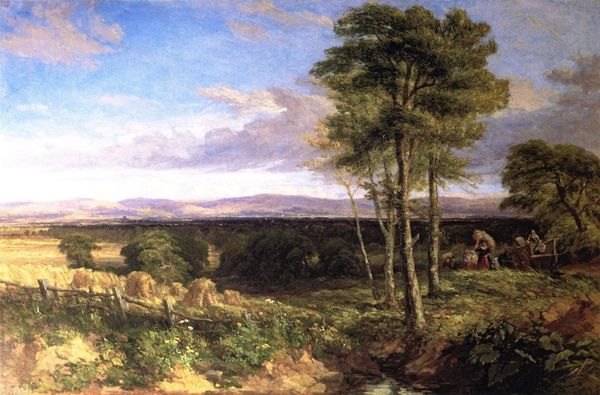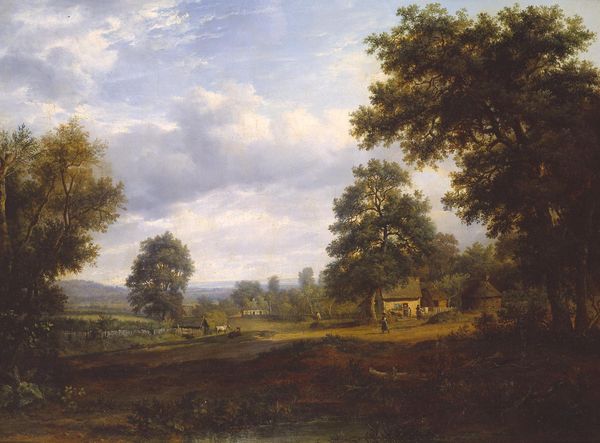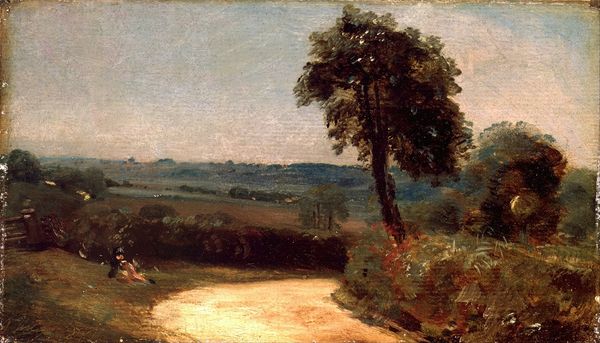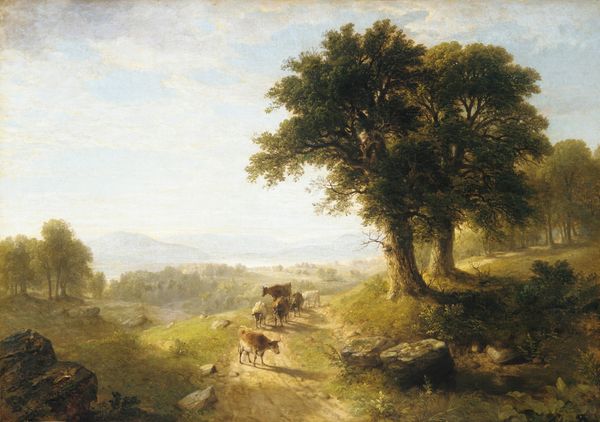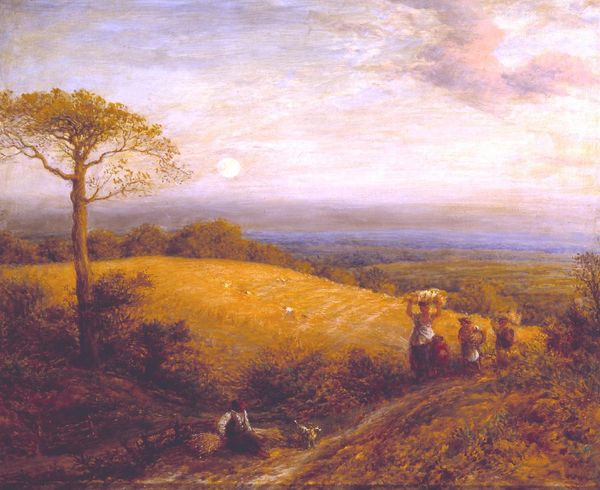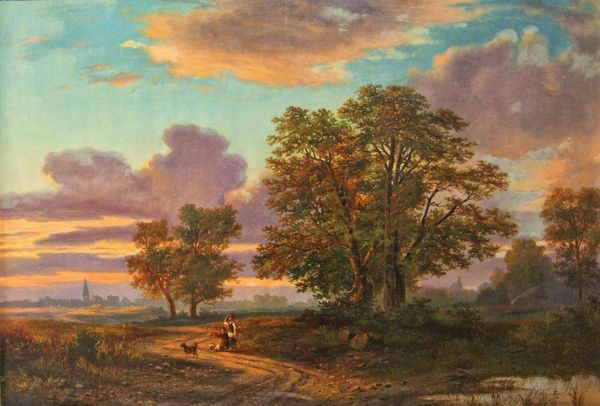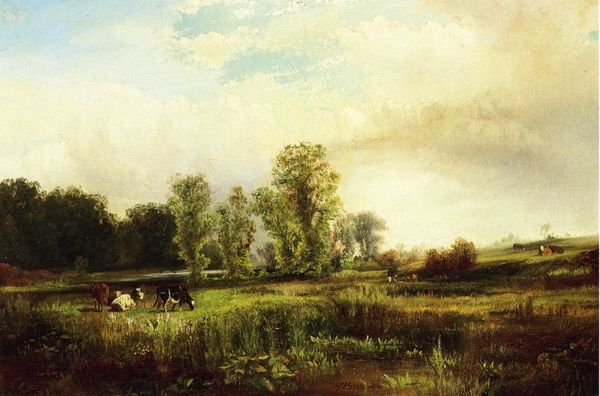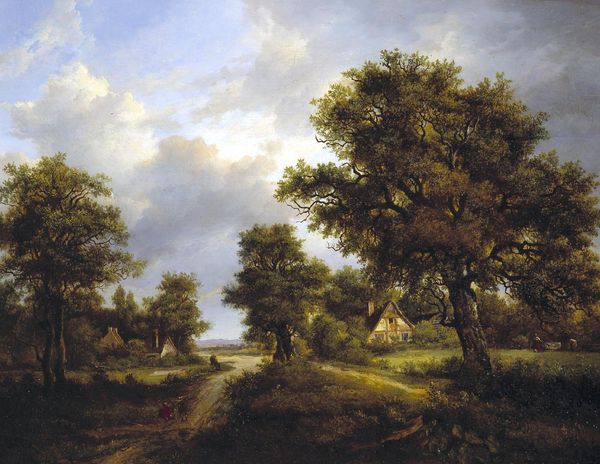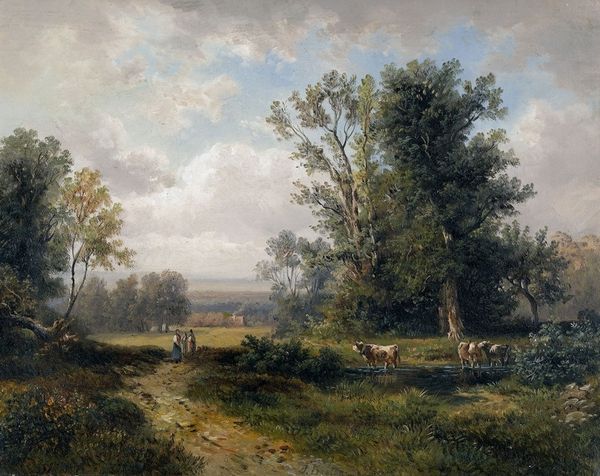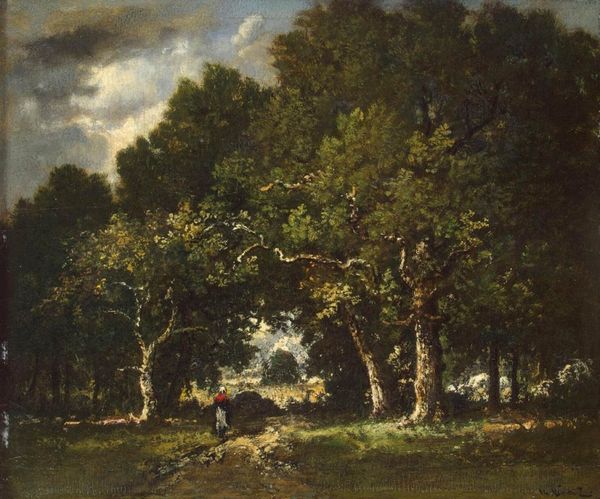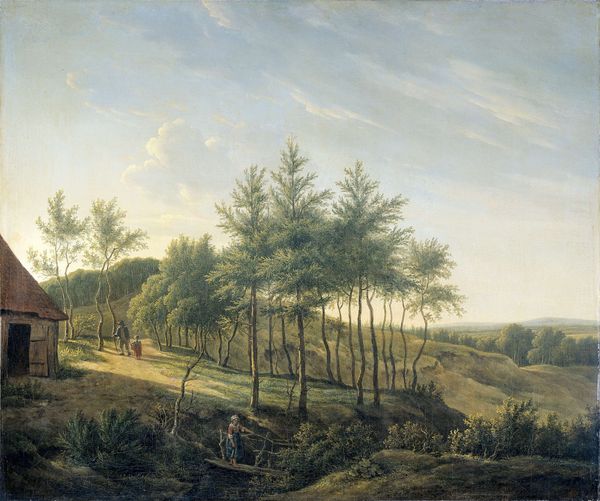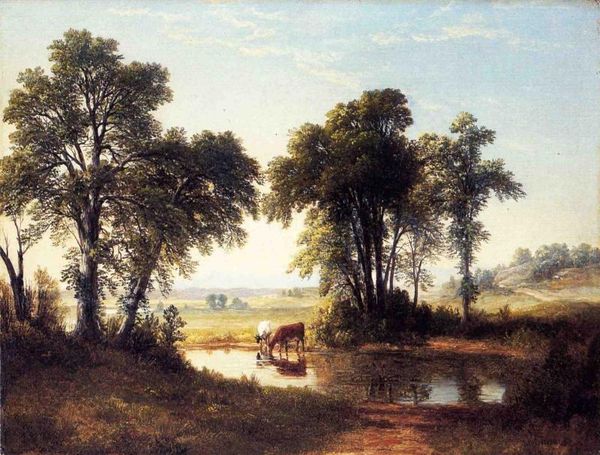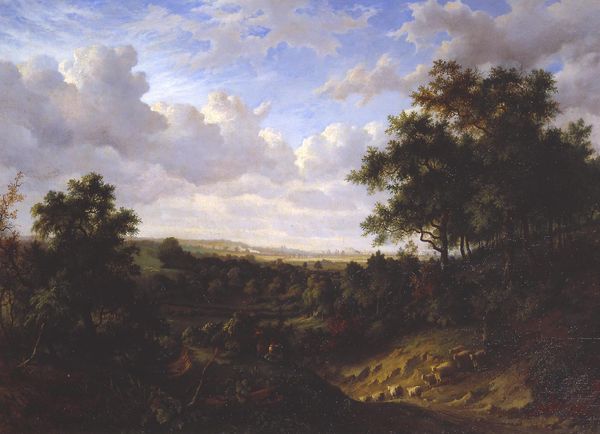
painting, plein-air, oil-paint
#
tree
#
sky
#
painting
#
countryside
#
grass
#
plein-air
#
oil-paint
#
landscape
#
nature
#
form
#
plant
#
romanticism
#
natural-landscape
#
history-painting
#
realism
Copyright: Public domain
Curator: We are looking at "The Skylark," a painting created in 1849 by David Cox. Cox was a key figure in British landscape painting, moving towards a freer style of expression in his later work. Editor: It feels...expansive. The brushwork seems almost hasty in places, especially in the sky, creating a sense of movement and breathlessness. There's a beautiful contrast between the dense foliage on the left and the openness of the landscape stretching out before us. Curator: Indeed. Cox was deeply invested in portraying the everyday lives of rural communities. He often explored themes of social change and its impact on working-class populations in England, depicting the ordinary activities of people in the countryside as a way to represent this transformation. It subtly acknowledges shifts in land use and ownership. Editor: I see. Thinking about the composition, my eye is drawn to the figure group in the foreground. But how interesting it is placed against that rather rough fence! The fence line provides a visual anchor, creating a barrier or point of transition between different planes. There is something almost geometric there against an otherwise romantic scene. Curator: Precisely! Cox was keen to capture not just the aesthetic beauty, but also the lived reality of rural people in transition during the Victorian era. Those individuals become critical as we try to evaluate whose labor allows us to experience beauty; this becomes particularly relevant in an era that's trying to understand colonial exploitations. Editor: And the light is handled exquisitely. It's not a dramatic, theatrical light, but something more muted, atmospheric. You feel like you're experiencing the airiness of the landscape. It truly showcases what oil paint can achieve. Curator: Absolutely, Cox uses his art as a voice. He invites viewers to consider broader questions about our relationship to land, labor, and social equity. This allows for a richer comprehension of both historical and continuing socio-political issues connected to these domains. Editor: The piece beautifully harmonizes its forms into something memorable, no doubt; however, it's fascinating to hear it as also a critical socio-political commentary. It gives new dimension to its form and color, somehow. Curator: By studying artists such as David Cox, we're pushed to address inequities in our social and political context while also learning to see things as aesthetic forms, just like what you have shown.
Comments
No comments
Be the first to comment and join the conversation on the ultimate creative platform.
